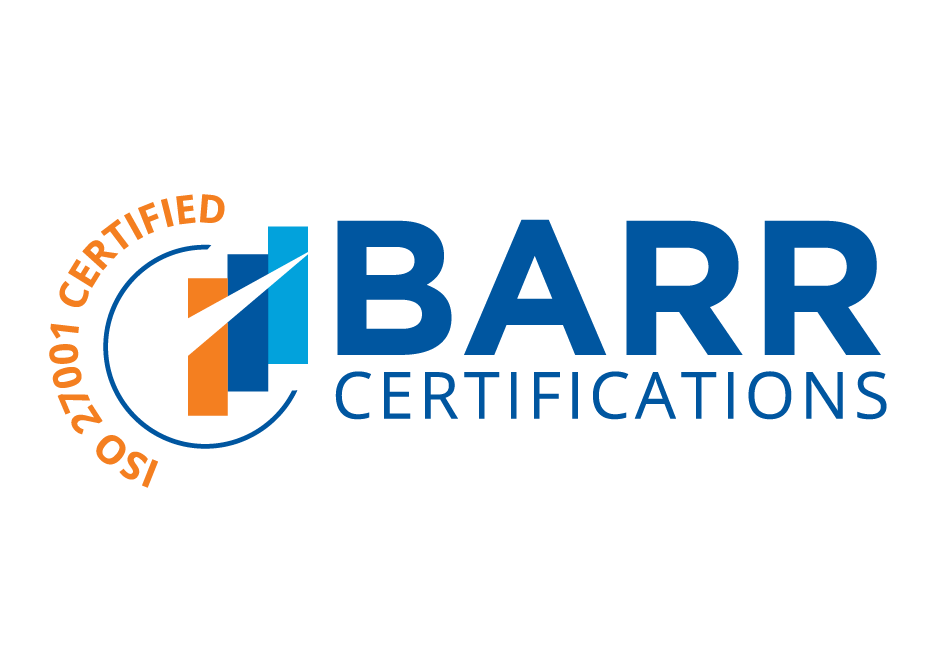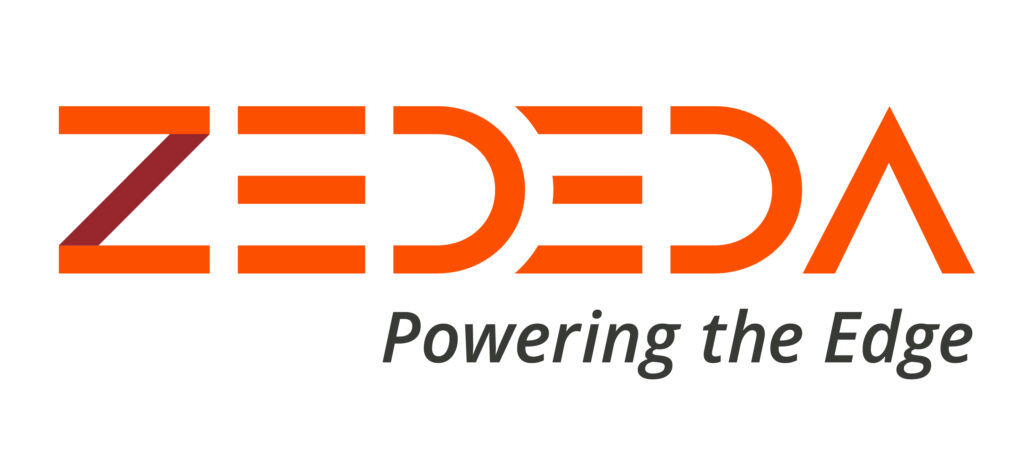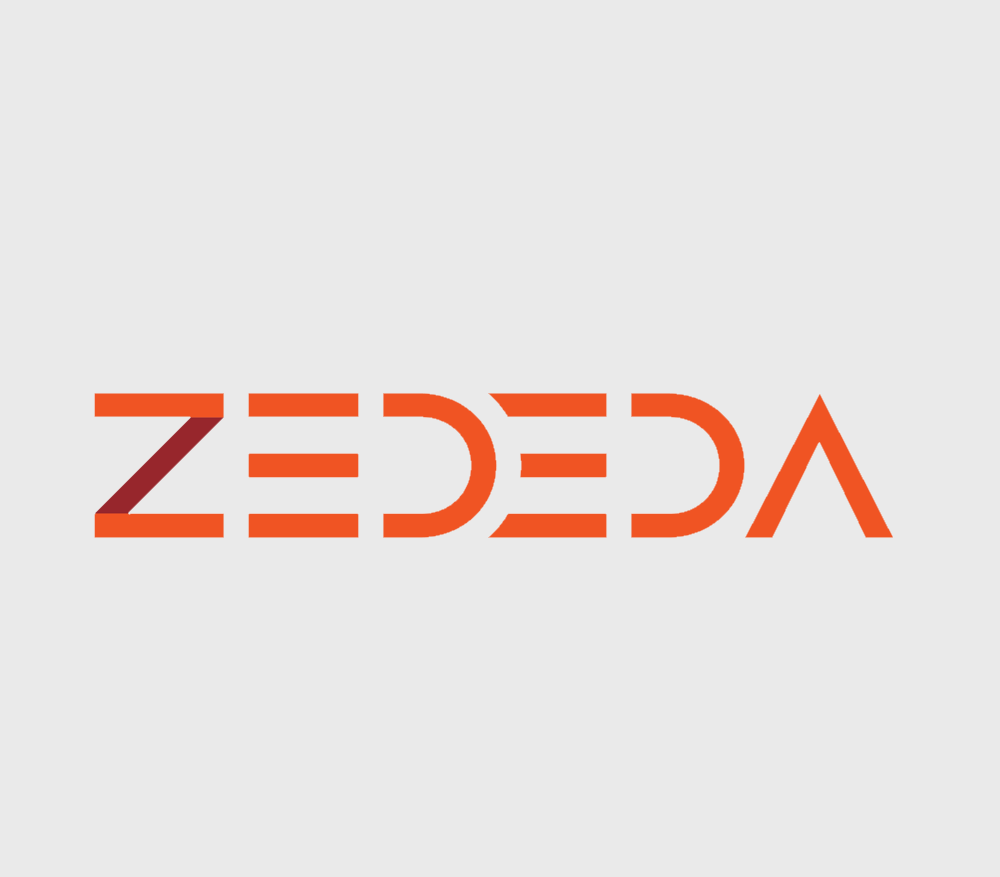
Introduction
The edge computing infrastructure market is increasingly growing – and will be worth up to $800B by 2028. Simultaneously, The Linux Foundation’s LF Edge project communities are evolving, and unified approaches to defining open edge computing are coming to light. In 2020, the LF Edge community published the paper, Sharpening the Edge: Overview of the LF Edge Taxonomy and Framework, which dives into the LF Edge taxonomy, key use cases, and other considerations for developing edge solutions. Recently, the LF Edge community – including the Akraino, EdgeX Foundry, EVE, Fledge, Open Horizon, State of the Edge, Alvarium, Baetyl, eKuiper, and FIDO Device Onboard projects – published a new white paper shedding further insights on the LF Edge taxonomy, market trends, and considerations in primary functional areas of management, security, connectivity, and analytics.
Secure Management and Orchestration for the Distributed Edge
As a leader in management and orchestration for the distributed edge, ZEDEDA is focused on the Distributed Edge Cloud Management and Orchestration (MANO) paradigm as outlined in the new LF Edge paper. This paradigm within the broader edge continuum involves cloud-native capable infrastructure that’s distributed outside of traditional data centers. Compared to data center deployments, OT and IT teams must assume that their distributed edge computing nodes are physically accessible – and that they’ll likely lose connectivity to their central management and orchestration controller at some point in the future.
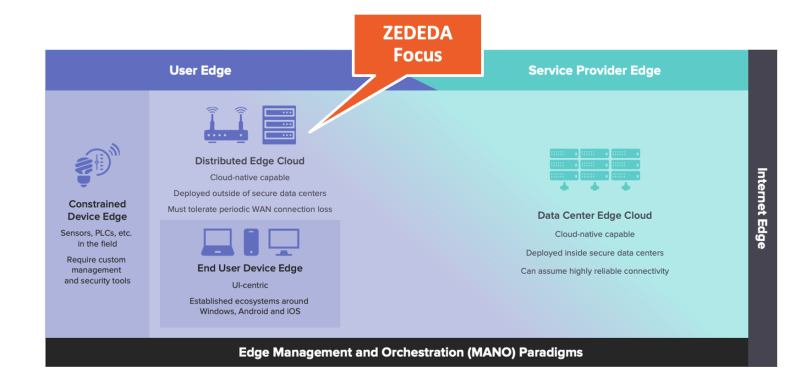
Furthermore, the model for delivering software updates to distributed edge assets must work in reverse from the data center. While server infrastructure in the data center is typically on a trusted network with its management controller that pushes updates as needed, distributed edge nodes are often deployed on untrusted networks and behind network firewalls and proxies. Therefore, they need to be able to call their central controller and pull updates whenever they have a connection.
ZEDEDA is a core contributor to Project EVE within LF Edge, which has purpose-built EVE-OS to meet all the unique needs of the Distributed Edge Cloud MANO paradigm. EVE (Edge Virtualization Engine) is a universal, open, bare metal operating system that features a robust zero-trust security model and supports cloud-native software development practices with any application format (e.g. VM, container, or cluster) on choice of edge hardware.
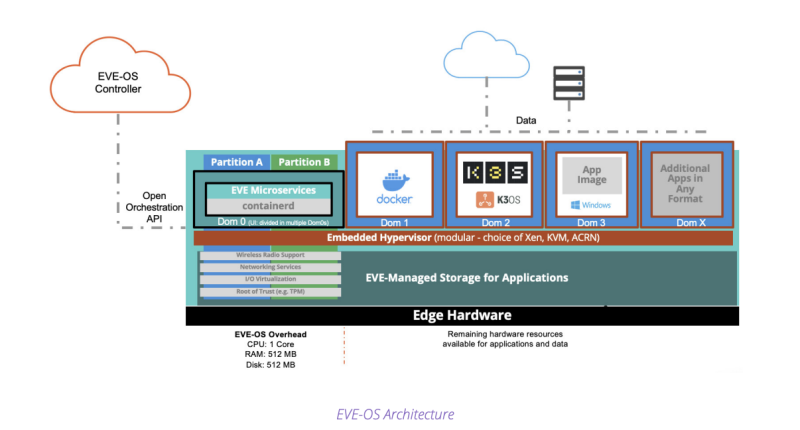
The EVE-OS footprint is just 1 CPU core and 512MB of memory and disk, making it suitable to scale from lightweight gateway hardware to clusters of servers. TPM 2.0 is preferred to enable the zero-trust security model, but other HSM’s can be supported. There are over 80 hardware models known to run EVE-OS today, including the Raspberry Pi. While a basic OSS controller is available from Project EVE, ZEDEDA’s commercial SaaS-based orchestrator makes it easy to scale deployments out utilizing EVE-OS as a base.
In addition, the open, vendor-neutral management API wrapped around EVE-OS prevents lock-in. “Openness” is critical to future-proofing edge infrastructure, especially when it comes to purchasing innovations from emerging technology providers. Companies that leverage solutions that have proprietary elements such as APIs and hypervisors introduce the risk of having to rip out all of their infrastructure in the field, should the provider end-of-life their offer, go out of business, or be acquired.
Meanwhile, with ZEDEDA, customers always have the option of building their own controller using the open APIs established by Project EVE. ZEDEDA customers love that they have this freedom, even though they prefer to just leverage our simple-to-use commercial management and orchestration console so they can focus on new software innovation.
Not only do traditional data center MANO solutions not meet the unique technology needs of the distributed edge, their pricing also isn’t appropriate. It’s typical for customers to spend tens of thousands to even millions of dollars for infrastructure in central and regional data centers because these resources are dense and serve many end users and devices downstream. Meanwhile, the scale and capability of distributed edge computing assets is better aligned with a range of tens to hundreds of thousands of dollars for infrastructure.
ZEDEDA’s SaaS-based orchestration solution is optimized for distributed edge computing, easy to get started with, and is priced appropriately to align with both the hardware capability and scale factor. Customers can “pay as they grow ” and benefit from an OpEx vs. CapEx model. Plus, ZEDEDA’s built-in, customizable app marketplace is ideal for end users, OEMs, and system integrators to build tailored solutions, along with their own app innovations.
Key Takeaways
If you’re seeking out edge computing solutions for your organization, just remember that there’s no one-size-fits-all. Despite there being similar management, orchestration and security principles spanning the edge continuum, and that there is an inherent blur between the different MANO paradigms (e.g. distributed edge bleeding into the data center), OT and IT organizations necessarily need different tools to address fundamental differences between each paradigm.
EVE-OS is purpose-built as a universal enabler for the Distributed Edge Cloud (MANO) paradigm and complements the well-established landscape of data center tools. And, customers are confident knowing that ZEDEDA’s commercial SaaS-based orchestrator leverages the EVE API’s to prevent lock-in, future proof their operations, and securely scale distributed edge computing solutions.
For further insights, considerations, and key use cases for developing edge solutions, check out the latest LF Edge community report, or access the recent press release.


